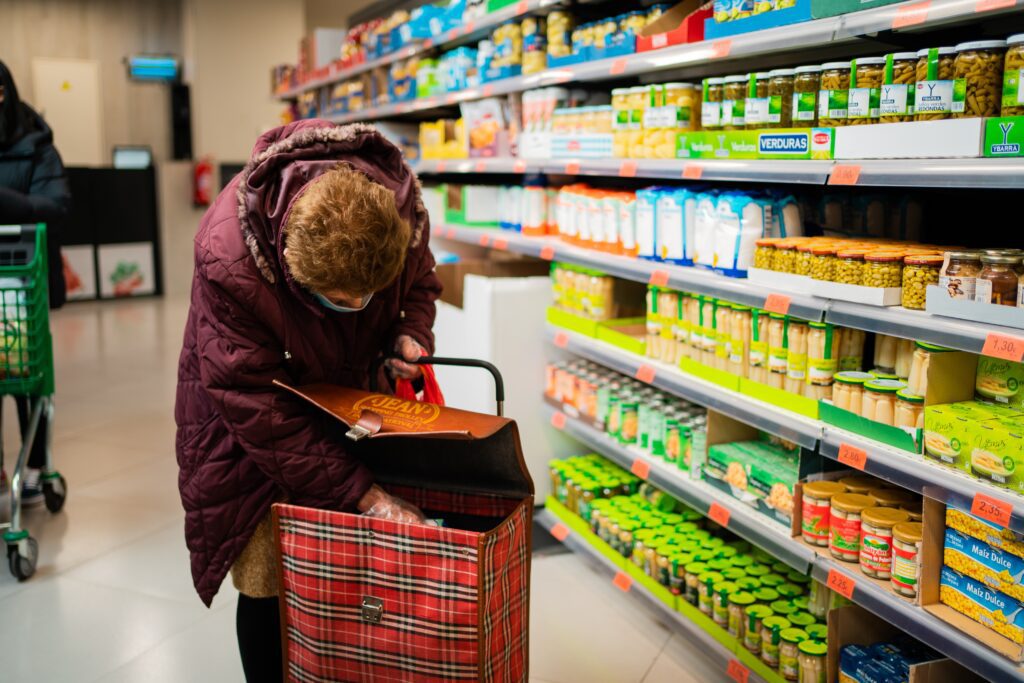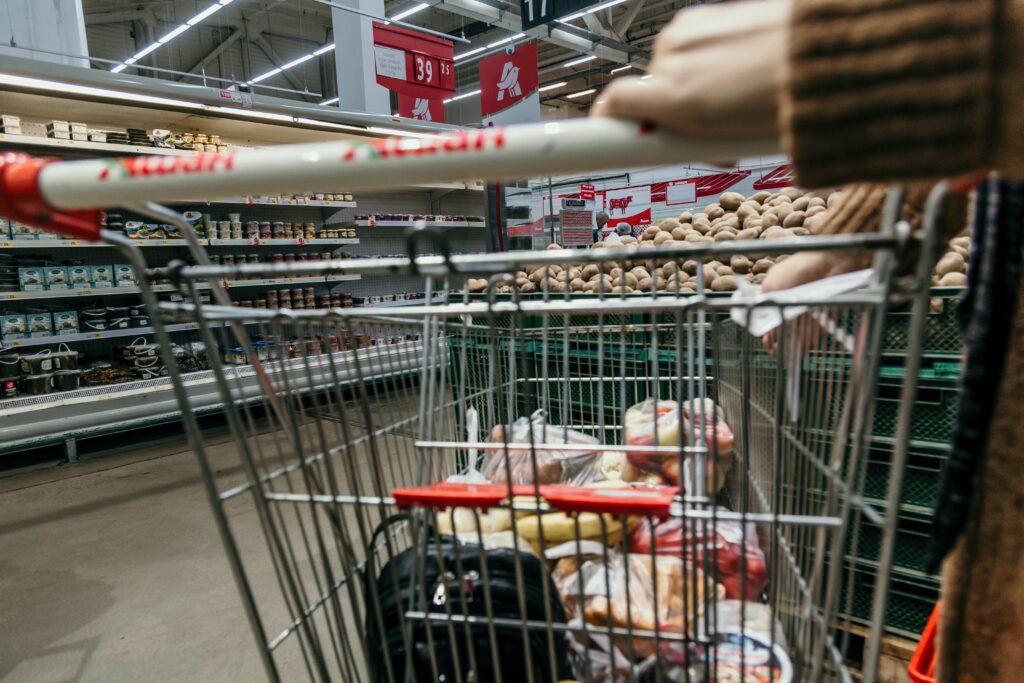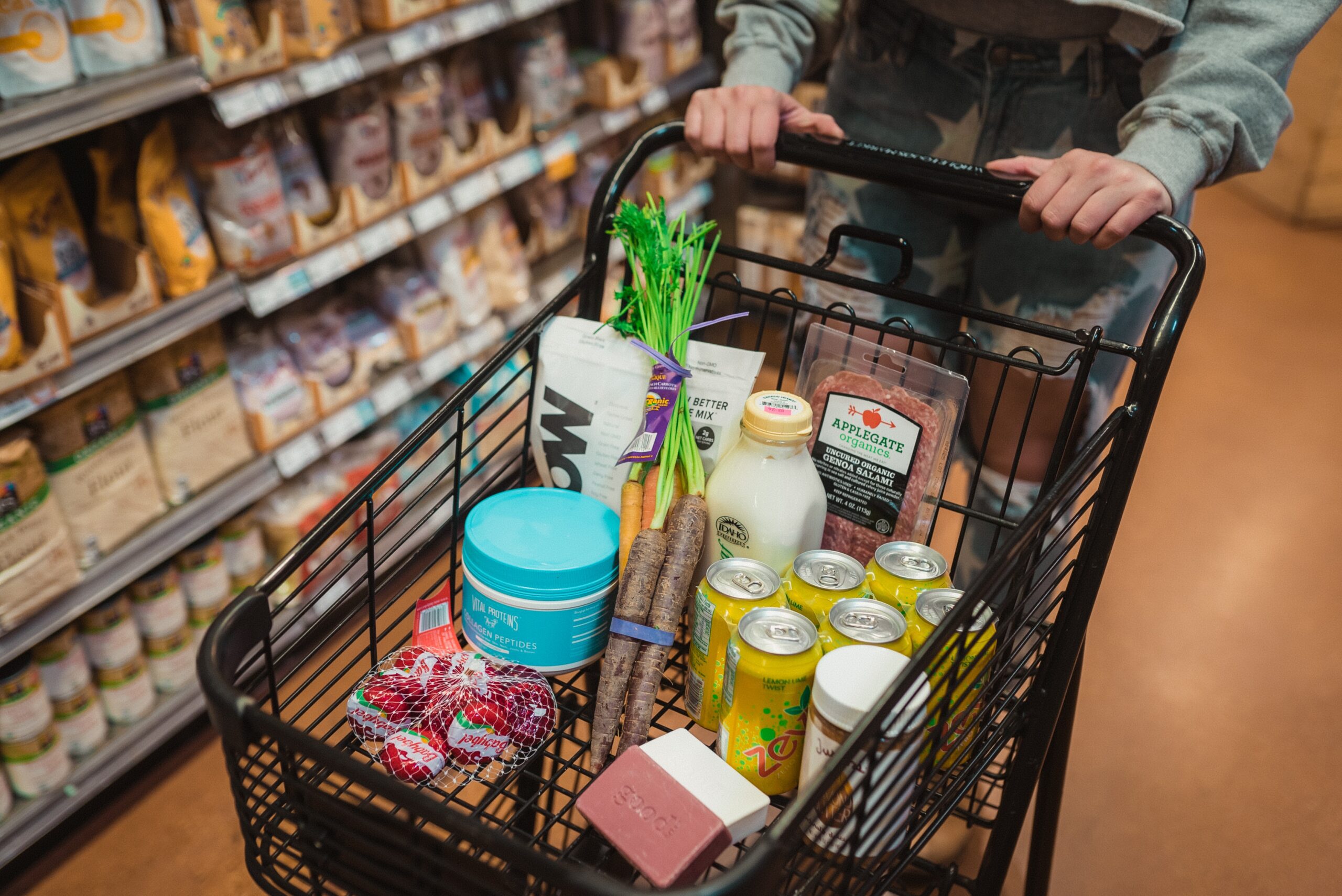New + updated
The 12 Best Snowboard Brands of 2024
March 4th
Eating at home has been the go-to move to keep savings up and costs down. But with grocery prices going up almost 12% in 2022, it seems like Americans now need to go a step further. Many of us have been wondering if it’s even possible to save money on groceries and if so — how? Of course, how much you spend depends on your food choices and how many people live in your household. But just as every money-saving mom knows, all of us can do something to cut down on our grocery bills.

Source: Unsplash
How you shop is just as important as where you shop. You may have noticed that if you go to a supermarket when you’re hungry, you end up loading your cart with way more products than you need. Don’t underestimate the impact of your psychological state when your shop. Impulse buys are usually the items that sneakily jack up our bills.
These impulses tend to increase when you’re feeling hungry, vulnerable or shopping with children in tow. So if you want to stick to your grocery list, shopping alone is advised. Also, be sure to shop at less popular times. When you’re in a busy store, you have less time and opportunity to look at the fine print on products or to compare prices so you may feel rushed into buying a higher-priced item.
2. Plan Your Grocery Hauls



Source: Unsplash
This may seem like a no-brainer but you’d be surprised at how often people don’t do this and what a difference it can make! Doesn’t matter if it’s a notepad, whiteboard or on your phone — make a little space for your grocery list and add to it as needed throughout the week. Try not to visit the store unless this list reaches at least 5 items. Fewer visits to the store means fewer opportunities for overbuying and overspending.
Making a meal plan and shopping for just the items you need for the week is better than picking up expensive ingredients based on a vague idea for a dish. This not only cuts down on money spent but also minimizes food waste. Organize your grocery list with this handy guide. Plan more, spend less!
3. Make Swaps On Your List



Source: Unsplash
If you keep an open mind, you can tap into opportunities for saving money when grocery shopping. Some people choose to swap out expensive products like high-end meat, for example, with cheaper cuts or different types of meat. Some take it a step further and swap in generic products for brand-name products — many of which are often sourced from the same place! You may save just a dollar or two on each item but this can add up to a significant amount over time. This tip can be applied to general financial planning as well, which can be especially helpful if you’re trying to save money as a student. So, be open to exploring more affordable options and look beyond the brand label next time you’re shopping for groceries!
Also Read: How To Spot Fake Product Reviews?
4. Targeted Buying



Source: Unsplash
You don’t have to buy all the items on your list at the same store. Chances are that you’re your hygiene products will cost much less at stores like Walmart or Target than at the grocery store. Make smart decisions about where you’re buying what. Wondering how to compare prices across all your favorite stores? We recommend using a browser extension like Carrot, where you can easily and efficiently save items, create shared wishlists, look at recommendations from other shoppers and so much more.
5. Understand Store Layouts



Source: Unsplash
The way products are placed in a store is part of their marketing strategy. Have you heard the phrase “eye level is buy level?” This means that the products the store wants to advertise are placed at eye level so you’re more likely to reach out for them first. Crazy, but genius, right? Also keep in mind that the inner aisles usually contain processed foods that could be more expensive, while the shelves along the perimeter generally have fresh produce and unprocessed items — so they’re likely less expensive and healthier options to boot! So, if you stick to the aisles along the perimeter, you’re likely to come out on top with a more cost-effective and healthier grocery run.
Also Read: 11 Hidden Amazon Hacks That Will Help You Save Big Bucks in 2023
6. Don’t Ignore Offers And Discounts
Most stores offer their customers reward points, vouchers or cash back options — be sure to take advantage of them even if it doesn’t seem like it’s saving much at the time, they can add up in the long run. For frequent customers, several stores also have loyalty programs with rewards credit cards. These are an excellent way to offset the increased prices from inflation. Through these credit cards, you could could be getting cash back or benefits for other purchases at movies, for gas or at restaurants.
7. Don’t Underestimate The Value Of Sales



Source: Unsplash
Coupons and sale offers create excellent opportunities for large grocery hauls. Keep an eye out for updates via newsletters/texts or even the local newspaper. That said, be sure to avoid adding items to your cart just because they’re on sale, instead, stick to your household supplies checklist.
8. Opt For Delivery Or Curbside Pick-ups



Source: Unsplash
If you don’t trust yourself to not overspend in the store, let the groceries come to you! Usually, curbside pickup is more economical than delivery, so keep that in mind and do what works best for your schedule and budget.
9. Use A Calculator



Source: Unsplash
If mental math is not your friend (you’re not alone), use the trusty calculator on your phone as a shopping buddy. Add your purchases up as you go through the aisles to know exactly where your total stands. This can be an extremely helpful tool when you’re trying to shop on a budget.
10. Shop In Bulk & Don’t Forget The Bulk Bins



Source: Unsplash
Staple products like flour, bread or cheese are often great options for buying in bulk. These tend to be available at a lower price per unit, which increases savings in the long run. You could simply freeze the extras until you’re ready to use them or split with friends and neighbors. We’ll even let you in on these well-kept Costco secrets before you visit!
Bulk bins can offer another solution for saving money on groceries. Items are sold loose in bulk bins so you can measure out exactly how much you want without having to buy pre-determined quantities. It works out very well for expensive items as you can get small quantities and pay accordingly. Plus, since you’re buying exactly how much you need, less food is wasted so it’s a win-win!
11. Use Tech To Make Better Choices!



Source: Unsplash
We have so many tech tools these days that can help us achieve our goals, from tracking budgets and saving money to organizing receipts. Why not rope them into helping you save money on groceries? Use Safari mobile extensions like Carrot to make lists, keep track of changing prices, calculating discounts and so much more. Carrot is excellent at keeping all your shopping choices organized and is one of the best grocery store price comparison apps available today!
Also Read: 7 Comparison Shopping Tips To Get The Best Bang For Your Buck
Wondering How To Save Money On Groceries?
Carrot is all set to match your savings and budgeting energy! Just click on the item you want and the new ‘Deal Hop’ feature scans the online world to show you where you can buy it at the lowest price.
Hop Your Way To A Lower Grocery Bill!








